Report from Jordan and Israel
February, 2019
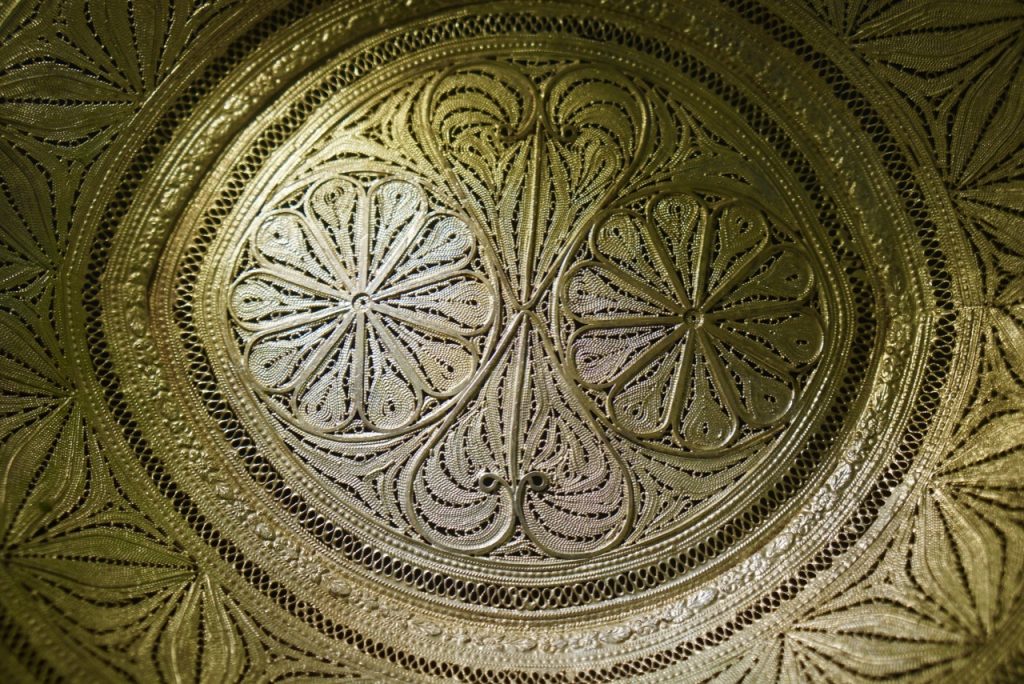
This blog describes a visit to ancient Petra and a conference of Middle East Nurses United in Human Caring.

This blog describes a visit to ancient Petra and a conference of Middle East Nurses United in Human Caring.

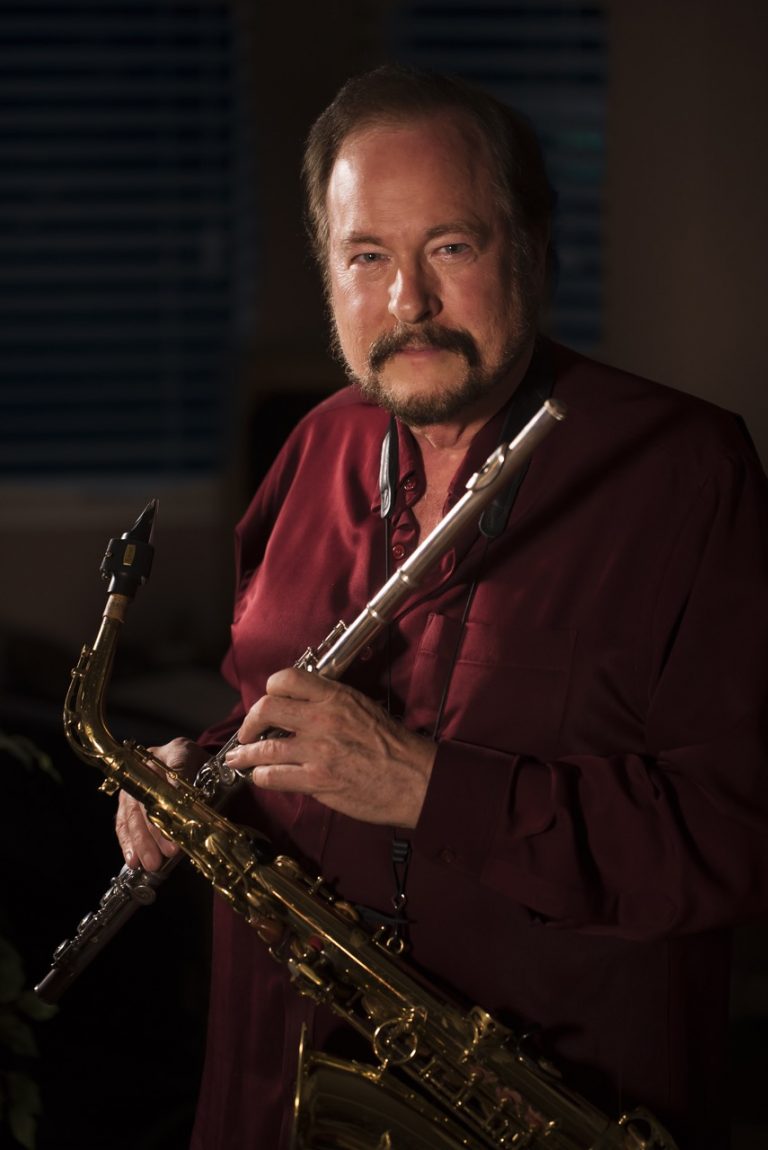
Attaining the age of seventy is a once-in-a-lifetime milestone, deserving the revelation of (hopefully) wise realizations not possible for the young of limited age and experience. The fact is, that I don’t feel so old, though it’s questionable whether seventy still qualifies as “middle age.”[…]
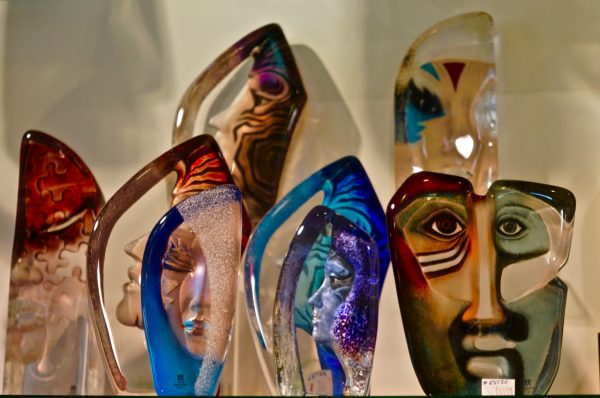
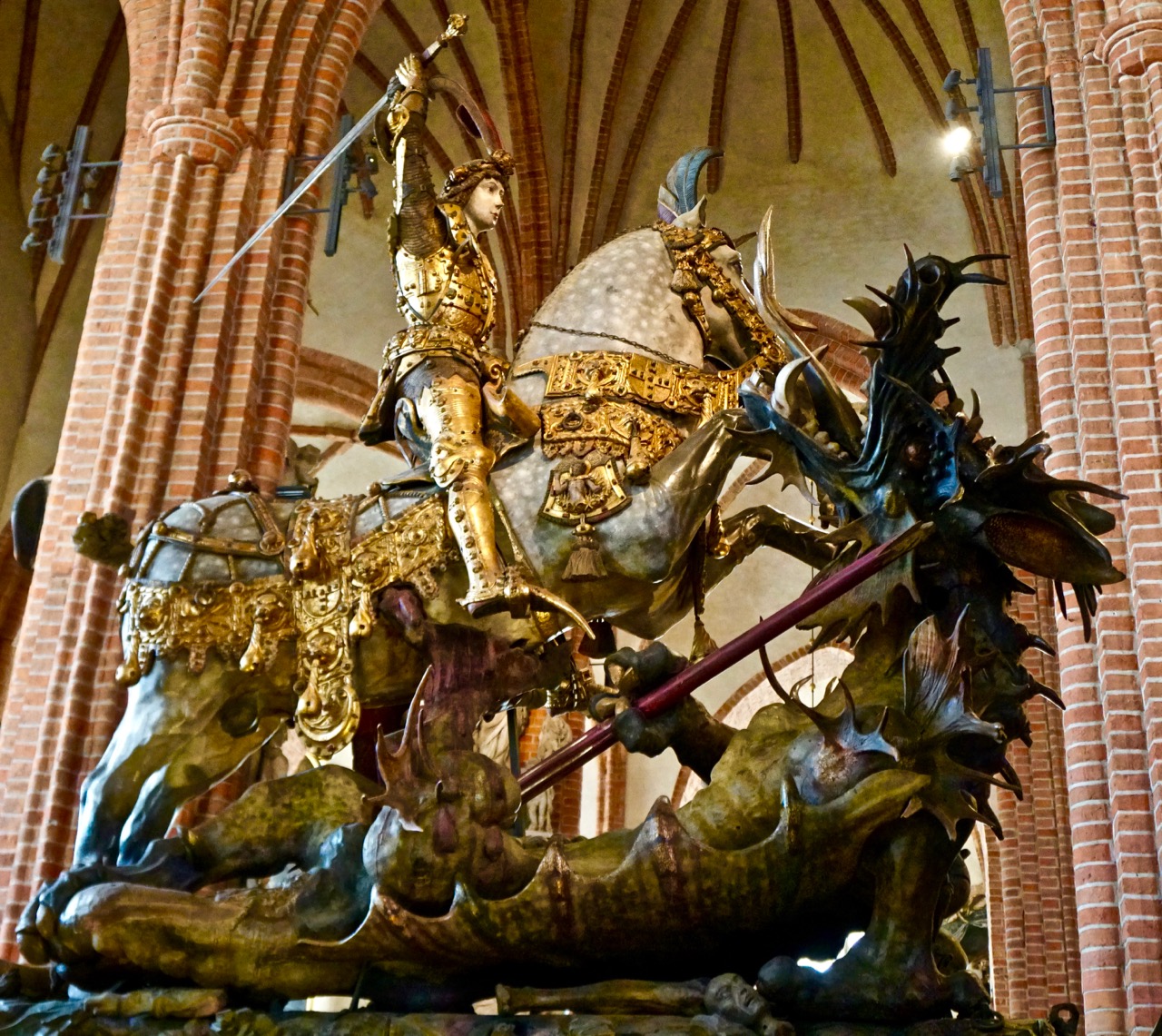
At first glance, it might seem that Sweden is an idealized version of California: Sweden has: universal free access to healthcare, free college education, an excellent public transportation system, a high regard for conservation and alternative energy production, a high level of female representation in government and industry, and (last but perhaps not least) little or no visible poverty. It will take a long time, perhaps generations, for California to develop and realize the liberal values embodied in Swedish society.

But even socialist-democratic Sweden has some serious challenges. Historically, Sweden has not been at war with any of its neighbors for over two hundred years. As a traditionally “neutral” country (similar to Switzerland), Sweden has been known as the “universal asylum” country, providing refuge to political dissidents of all persuasions. I personally appreciated this tradition when I first visited Sweden in 1970, part of my three-and-a-half-year absence from the US when I avoided having to participate in the Vietnam War. In recent years, Sweden has accepted more Iraqi and Syrian refugees per capita than any country in the world. (Germany has accepted an overall larger number.) But similar to Populist movements in the US and the rest of Europe, there is a grass-roots backlash against Sweden’s traditional commitment to save the world’s persecuted refugees. A political party with a Trump-like message has emerged to become the second largest political party in the country. (Sweden has half a dozen major competing political parties, ranging in philosophies from right, to left, to environmental/green.)

At the end of an eight day visit to Stockholm, I turned on the Swedish government channel, P2, to challenge my Swedish language comprehension one last time before boarding the flight back to the US in the afternoon. In a program similar to our C-Span, the final multi-party debate was being broadcast, in which alternating party representatives gave short speeches outlining their positions. I was most interested in hearing how the right-wing populist party presented itself.

The well-spoken populist party rep decried the influence of the large number of immigrants. He said: The money needed to help newly-arrived Middle-East war refugees takes money away from schools, healthcare, infrastructure, and military budgets, wasting Swedish taxpayers’ money. One example he cited was the presence of seven thousand Afghan men who don’t speak Swedish, have no marketable skills, and live off welfare while increasing crime and breeding radical Islam.
A leftist political spokesman answered him: How dare you speak of budget problems when your party wants to cut all budgets to the departments you mentioned by giving tax cuts to the billionaires. No tax cut to the rich has ever in all history resulted in improvement for refugees or the poor. And most importantly, Sweden celebrates its national values of freedom and justice for all, respect for diversity, and providing a decent standard of living for all, by taking in the refugees whose home countries are engulfed in wars.

Multiple party representatives harkened to the long-standing Swedish championing of human rights. It was stated that Sweden should not give foreign aid or do business with countries that wage war on their neighbors, such as Saudi Arabia, which uses its American-supplied weapons to bomb its neighbor Yemen, causing the world’s largest cholera epidemic, and threatening the starvation of millions by bombing the main seaport through which most of Yemen’s food enters.
I was struck while listening to the televised debate how often the Swedish politicians cited core Swedish values as the basis for their political beliefs. I felt so sad for the decline in the ideals of American values in our current political atmosphere. For example, Americans find it acceptable that prisoners at Guantanamo Bay are imprisoned for over a decade with no trials, no access to the US judicial system, and no prospect for ever being given a chance to defend themselves in court. The acceptance of torture is another blind spot in American values. Starting with Trump, there has been a resurgence of previously hidden racist expressions and actions, against Moslems, Blacks, Mexicans, and immigrants in general. Ignoring environmental concerns (by Scott Pruitt-Secretary of the Interior), undermining public education (by Betsy DeVoss-Secretary of Education), separating young children from asylum seekers and “losing” them in the system (ordered by Attorney-General Sessions), and cutting social welfare programs in order to give tax breaks to billionaires…all of these actions are contrary to traditional American values.

The US used to be proud to be a “melting-pot,” assimilating diverse immigrant cultures. At this point, Sweden is the world’s premiere melting pot. Taking three Stockholm Uber taxi rides, our drivers were two Iranians and a Syrian. At the subway ticket office, I was served by a dark-skinned-hijab-wearing woman who spoke perfect English (and of course, Swedish). And yet, during the last few years, there has been the appearance of Bulgarian street beggars, either women holding infants with a cup for donations, or Bulgarian street musicians (who are mostly excellent!). This is a new phenomenon for Sweden. Apparently, the social welfare system that takes care of immigrants is overwhelmed. I had never seen beggars on the streets in Sweden in all these years until recently.
Nonetheless, regardless of the common challenges that confront the US and Sweden, my affection for Sweden and its people continues unabated. Our eight-day recent visit was filled with meetings with old friends, including some relationships dating from my first visit in 1970. There were also new friendships, including recent Swedish Music-Hall-of-Fame inductee, singer Marie Bergman. I first met Marie only a year ago, introduced by a mutual friend. On this visit, she organized a concert for Susan and me, with her and her husband, at a grand cathedral in Stockholm which had the most amazing acoustics, comparable to San Francisco’s famous Grace Cathedral. I was also able to play a jazz gig organized by my dear friend Christian Paulin, leader of the group Mynta, with whom I toured Scandinavia and India for a decade. This jazz gig featured Christian’s sister Maria on jazz vocals. Talent is shared by the siblings.

We met once again with Ove Hagelin, the curator of one of, if not the greatest, medical library of antique books in the world. Ove has given private tours to individuals such as Bill Gates and Bill Clinton. I’m so privileged to have enjoyed three private tours with Ove. This week we went to his apartment, supposedly to chat before going to dinner. Instead, we skipped dinner altogether and spent the whole evening in his apartment, drinking wine and being shown amazing books from Ove’s private collection. Highlights included: the earliest ”book” in existence—a 3500-year-old stone with Cuneiform writing on it. Ove has an original edition of “the greatest book in history”, Darwin’s Origin of Species, as well as “the most evil book in history”, a chemical formula book from the German company that during World War One manufactured mustard gas, chlorine gas, and other chemicals used in the deadly trench warfare of WWI. He also showed us unique collections, of Cuban cigarette labels, British textile labels collected during the colonial period from Indian and Chinese textile-export companies, and private Swedish diaries which documented personal life events as well as weather spanning many decades during the 19th century. Ove is seventy-eight years old, and is having trouble finding a successor to take over his position overseeing the incredible Hagströmer Medikalisk Biblioteket housed by the famed Karolinska Institute, one of the world’s most famous medical research hospitals.

I tried my best to regain my Swedish language skills. It’s hard for an English-speaker to learn Swedish. Half the time, when I would ask someone a question in Swedish, they would notice my accent and answer in English. Unlike Germany and France where English/American movies and TV shows are dubbed in German and French, there is only sub-titling on Swedish television. This means that every day, if they turn on their televisions Swedes hear English spoken while reading the Swedish translations below. It’s a great on-going national language lesson. In fact, the high English proficiency of Swedes is so great, that being in the company of a dozen Swedes, just because one person didn’t understand Swedish (Susan) and one only understood about half (me), they all easily spoke English together for our sakes.
Stockholm is a beautiful city, my favorite in the world. The Old City (Gamla Stan) maintains its centuries’-old buildings and narrow alleyways, as well as containing the Royal Palace and Parliament. Stockholm is a city located on many islands, which are linked by extensive bridges and tunnels, as well as an efficient underground train system. It is very pedestrian friendly. Many Swedes find no reason to own a car, after all, parking spaces, gasoline, and taxes are all expensive. The cost of living in Stockholm is higher than Reno, though perhaps not as high as San Francisco or New York. And compared to those American cities, there is much less automobile traffic.

There are three national/government television channels. Though I didn’t listen this time, I remember there being three national radio stations as well. They are heavier on news and classical music, similar to our NPR-National Public Radio, than the commercial television channels. I was annoyed by the many broadcasts of American infomercials hawking household devices and cosmetics on the commercial Swedish television channels. Our hotel was nice, but a “budget” hotel, as exemplified by the fact that the television programs offered were “basic”, meaning that there were only Swedish channels, no CNN, BBC, Al Jazeera, RT, France 24, or Deutsche Welle, which I otherwise would have watched. The only benefit was that I listened to more Swedish which improved by language skills, while taking a break from American political chatter. On this visit, I made several short speeches in Swedish at our concerts, introducing specific musical pieces, as well as talking about Healing Healthcare Systems.
Thanks to my Swedish friends for making this visit a special one. I love your country!
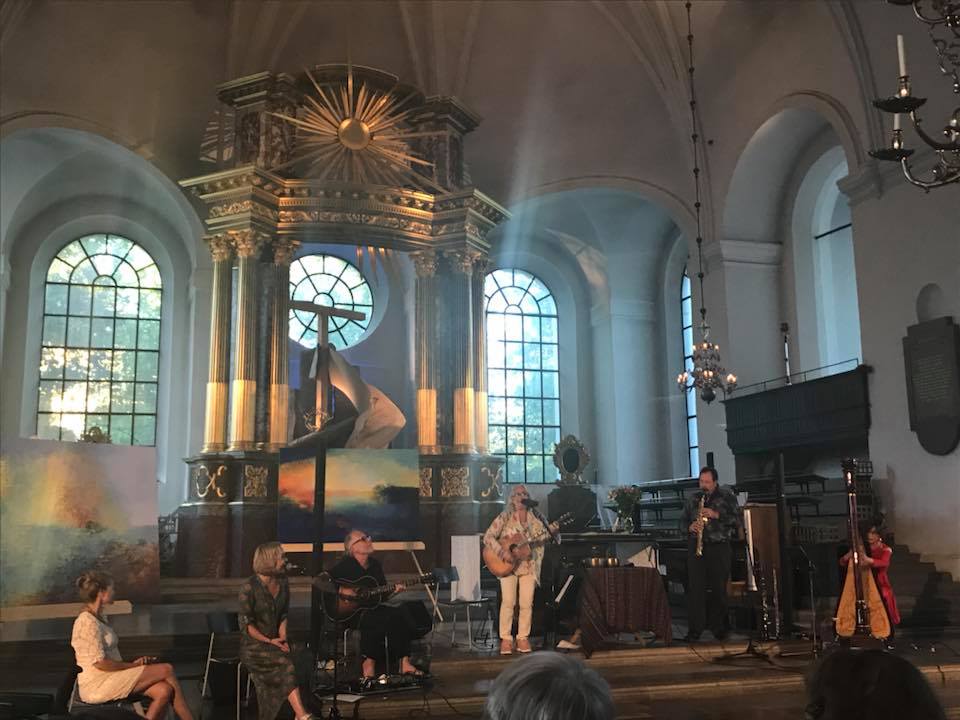

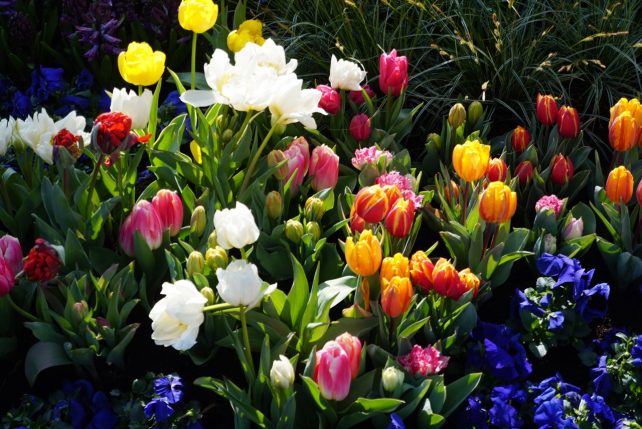
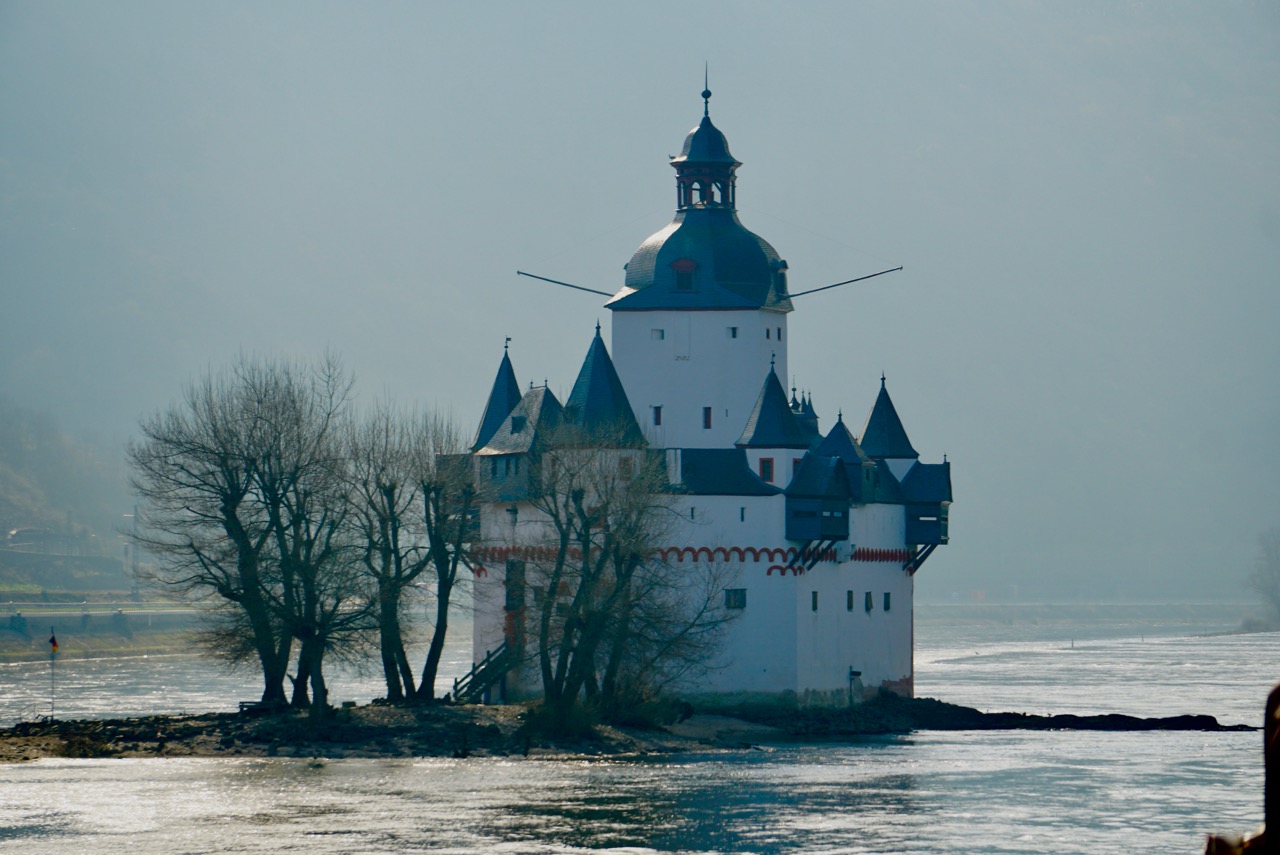 A medieval fortress on an island in the Rhine River, positioned to collect traffic from riverboat traffic
A medieval fortress on an island in the Rhine River, positioned to collect traffic from riverboat trafficI’m very lucky to be able to travel internationally as much as I do. It’s a privilege once reserved exclusively to kings, military leaders, international merchants, and those individuals rich enough to afford to travel. These days, travel has gotten cheaper in some ways (e.g. airfare, internet booking and phones) though more expensive in others (food, lodging). For me personally, traveling is extremely stimulating. It offers a non-stop stream of new people and experiences. Having traveled to certain countries numerous times (Germany, Sweden, India), I’m pleased to be able to drop into the lives of old friends, to be totally immersed in the local culture, as opposed to being a tourist forever in transit and only able to delve superficially into the local cultures. This blog is about a purely tourist trip, on the one hand offering only the quick superficial view of the cities visited, yet better than nothing, and in many cases paving the way for future return visits. This tourist trips are different from my more single-focused recurring musical tours to Sweden and India.
 Heidelberg Castle
Heidelberg CastleLet me begin this blog with an unsolicited endorsement of Viking River Cruises. This company does a great job in creating a smooth low stress environment for passengers on its boats. The river cruises are a fantastic way to see Europe, because every day the boat docks in the center of a new city. The cruise line provides land tours, either walking or by bus, with local guides. I’m writing this essay at the end of an eight-day journey down the Rhine River from Basel, Switzerland, through Germany to Amsterdam, Holland. Though I’ve lived in and visited Germany enough times over the years to become reasonably fluent in the language, this was my first visit to this south-west side of Germany.
 A variety of Holland's famous tulips
A variety of Holland's famous tulipsThis trip reminded me that Europeans are confronted with their long and turbulent history every day of their lives. There are castles, fortresses, artwork, windmills, cathedrals, blended languages, multi-national populations, and many other constant reminders of the great cultural achievements of the various nations, as well as their numerous wars, conquests, and counter-conquests. A survey of comparative European history confirms that the recent decades under the umbrella of the European Union (EU) have been the longest period of sustained peace in European history! Two exceptional nations in the sad history of the many European wars are Switzerland and Sweden, which have experienced centuries of peace, based on their traditions of neutrality. However, their neutrality has sometimes resulted in moral condemnation for their tacit support for some of the worst tyrants in history. Most notably, both “neutral” countries have been accused of collaboration and appeasement of the Nazis in World War II. Switzerland did not offer refuge to Jews. Sweden allowed the Nazi military to use its railways to set up the invasion of Norway. Nonetheless, because Switzerland and Sweden were not bombed during the last world war, their industries were fully intact at the end of the war, which resulted in their sustained economic strength and some of the highest current living standards in the world.
 A classic Amsterdam drawbridge
A classic Amsterdam drawbridgeThe Rhine River marks the boundary between Germany and France for a large portion of the cruise. Departing Basel, Switzerland, our first stop was in Breisach, Germany, an ancient city that was one of the original bases for the invading Roman Empire two thousand years ago. The next stop was the city of Strasbourg, currently part of France, though at times in its history it was part of Germany. The Black Forest of Germany is famous historically and as a protected nature area. When the Roman Empire invaded this part of Europe, they followed the same route as our river cruise down the Rhine River from Switzerland. They established towns and military fortresses along their river invasion route. The Romans avoided the Black Forest, because it was home to the wild bandits and marauders that opposed the Roman invaders.
It was the farmers in the Black Forest region who first invented the Cuckoo Clock. The ornate clocks became a cooperative project in which different families would hand-carve the different parts to be assembled into the distinctive clocks. Perhaps equally famous is Black Forest Cake, a layered cake with cherries and whipped cream.
Strasbourg is currently a French city. But during other centuries, it was a German city. Thus, the city is bi-cultural and tri-lingual (at least!). Strasbourg is home to several EU and UN offices, which have created huge modern edifices. Much of the Middle Age fortifications survive, from the time when Strasbourg was home to forces that controlled the traffic and trade on the Rhine.
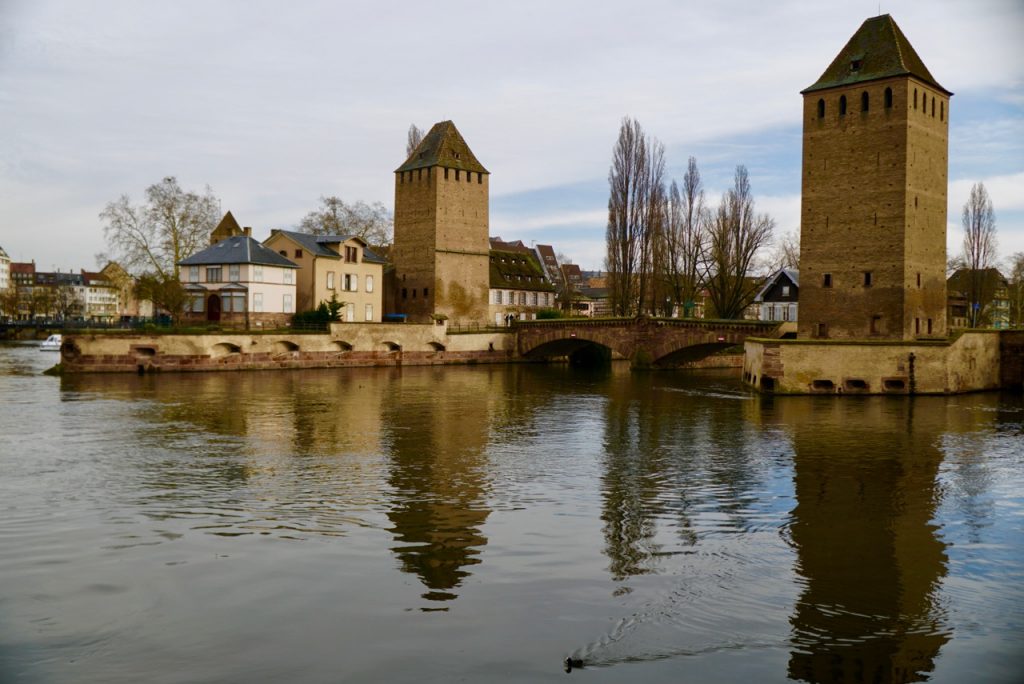 Ancient guard towers protecting the entrance to Strasbourg
Ancient guard towers protecting the entrance to StrasbourgMosel wine (sourced initially from the Mosel River region of Germany) was the house white wine on the boat. One of the excursions offered by Viking was a visit to a small family winery on the banks of the Mosel. We learned about the history of the region, the challenges of growing wine in this particular region. The French concept of terroir was invoked. Terroir refers to the idea that the soil characteristics of a region impart a unique taste to the wines.
 Entrance to the Cologne Cathedral, the Kölner Dom
Entrance to the Cologne Cathedral, the Kölner Dom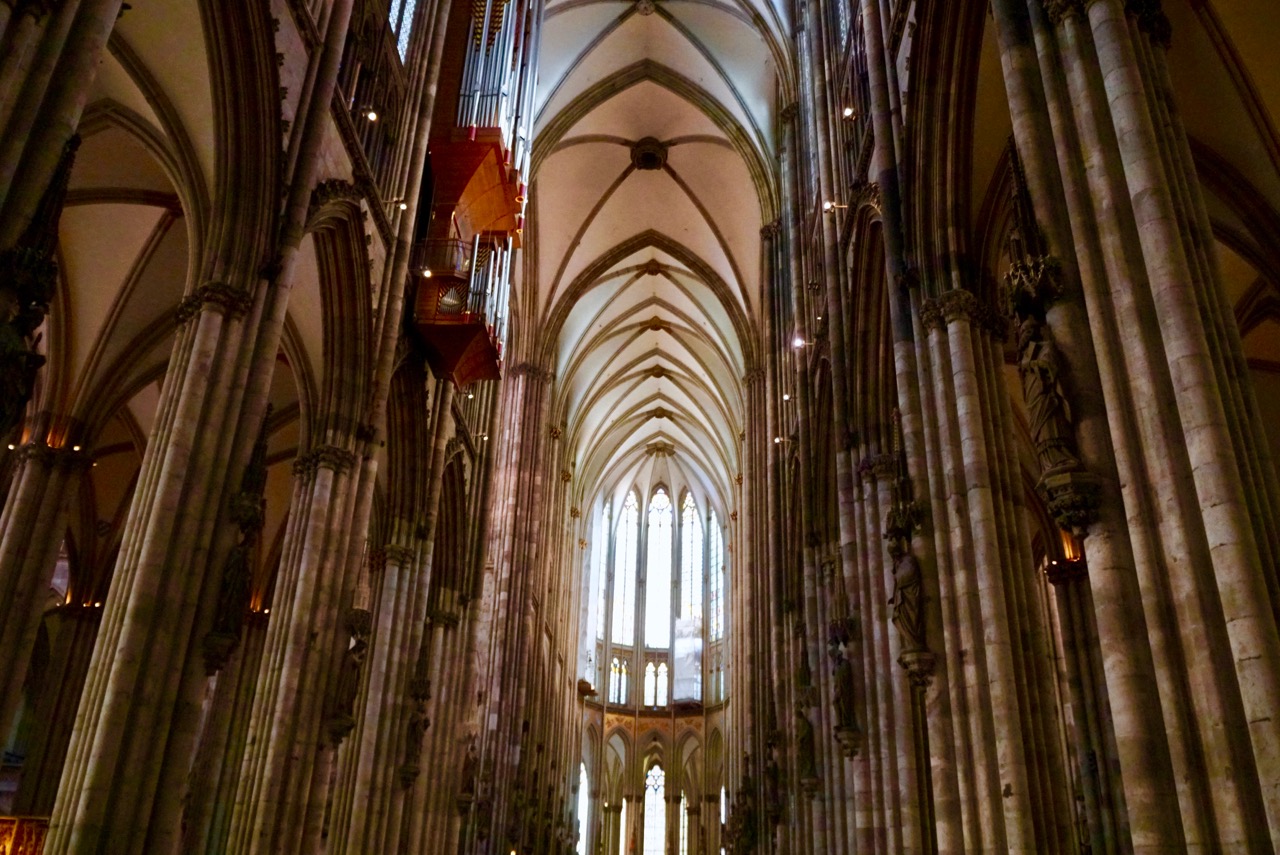 Interior of the Cologne Cathedral
Interior of the Cologne CathedralCologne (in German Köln) is an important German city, and a pleasure for me to visit for the first time. Our walking tour guide explained that Cologne had been an important Roman outpost on the Rhine River. On the other side were the lawless German tribes. Cologne’s famous cathedral dominates the city’s skyline. We learned that much of the money for the cathedral had come from Berlin, for whom the Germanic cathedral would send a message to the French. During the reign of Louiz the 14th of France, its armies had invaded the Rhine Valley, destroying many of the castles that were the homes of local German territorial rulers. The photos show a range of Rhine river valley castles, some in ruins and some renovated and in use as residences or hotels.
As the Rhine River leaves France and flows east of Belgium, the landscape flattens out into the Dutch plane. In the boat, one notices that names are now mostly in Dutch, though there was no demarcated border on the river. Viking arranged an excursion to a cheese farm/factory as well as to a World Heritage Site called Kinderdijk, which features a line of fourteen windmills dating from the mid eighteenth century. All are maintained in working order. The demonstration windmill on our tourist visit has been managed by members of the same family for eleven generations! The “Miller families”…
 Ten of the total fourteen Kinderdijk windmills, a World Heritage Site
Ten of the total fourteen Kinderdijk windmills, a World Heritage SiteThe mills at Kinderdijk were all built to pump water from the low-lying inland territory to a river which flows into the North Sea. It was amazing to see miles of fields lying below sea level and the water level of the river receiving the water pumped by the windmills. I had always thought of windmills as being used to grind wheat into flour. But there are also windmills that cut wood/lumber.
 Four of the Kinderdijk windmills
Four of the Kinderdijk windmills Interior of the windmill showing the huge waterwheel gear-disc
Interior of the windmill showing the huge waterwheel gear-discDuring the colonial period, the Dutch ruled the world’s oceans. At home, the Dutch are the world’s masters of water management. Thirty percent of the Netherlands is below sea level. Shiphol Airport, the home of KLM Airlines and transit point for much of Europe is five meters/seventeen feet below sea level! The Dutch defended themselves for centuries against invading armies by being able to flood large tracks of land as a physical barrier to the would-be invaders. Nazi Germany dropped paratroop soldiers into Holland, flying over and bypassing the flooded fields. The Dutch army was quickly overwhelmed.
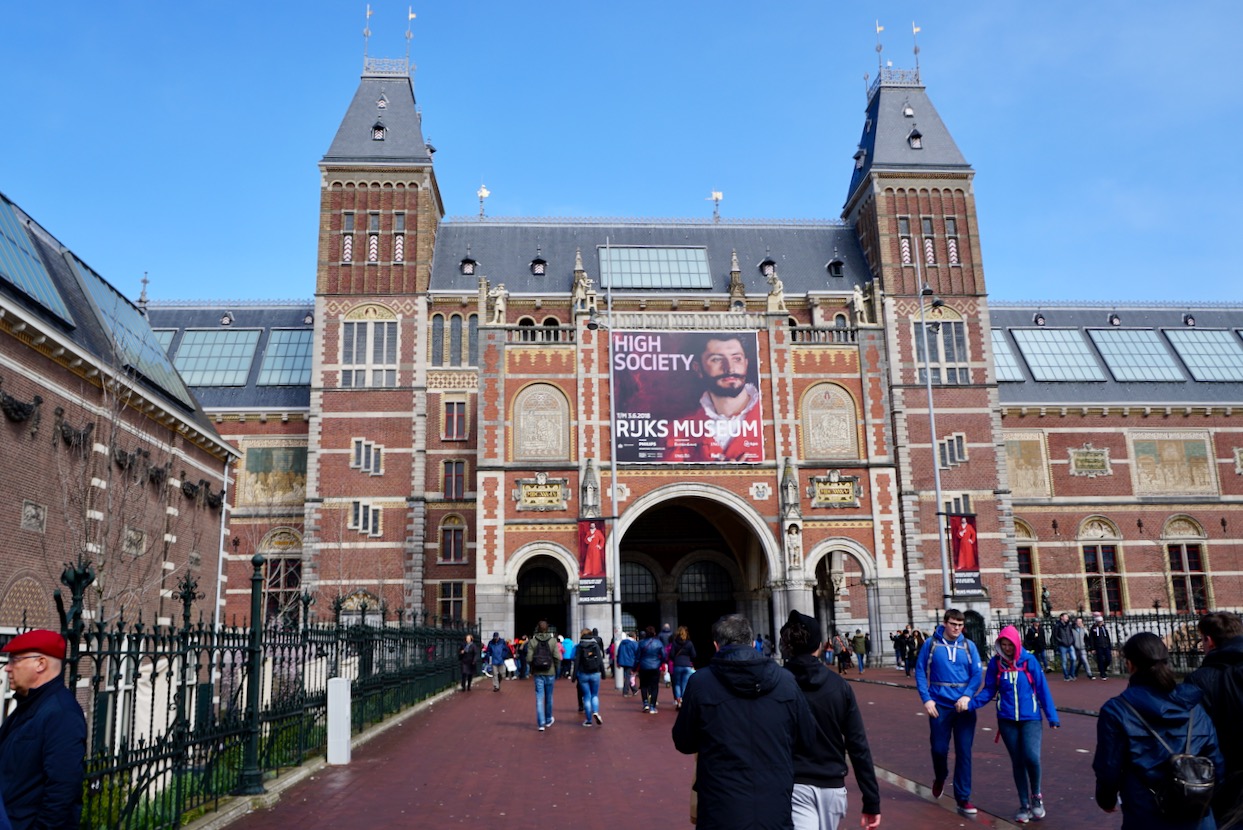 The Rijk's Museum, home of the Dutch Masters
The Rijk's Museum, home of the Dutch MastersAmsterdam is truly a tourist-friendly city, that is, if the hoards of tourists don’t overwhelm the environment. (I was reminded of the crowds in India, but realistically, would take twice as many tourists to match India’s population density.) There are many world class museums, but alas, we were only staying in Amsterdam for two full days following the end of the Viking River Cruise. Over twenty years ago, Susan and I had viewed the paintings of Rembrandt and the Dutch masters whose works are featured in the Rijksmuseum. We remembered how strong an impression these paintings had made. On this follow-up visit, the effect was just as strong. One could easily spend hours just examining each masterwork, such as Rembrandt’s Night Watch. The Rijksmuseum was built around the huge paintings by the “Dutch Masters” from the seventeenth century. The artistic skill with which the individual faces are painted is eerie. We know that these individuals have been dead for centuries. But in these paintings, they live on!
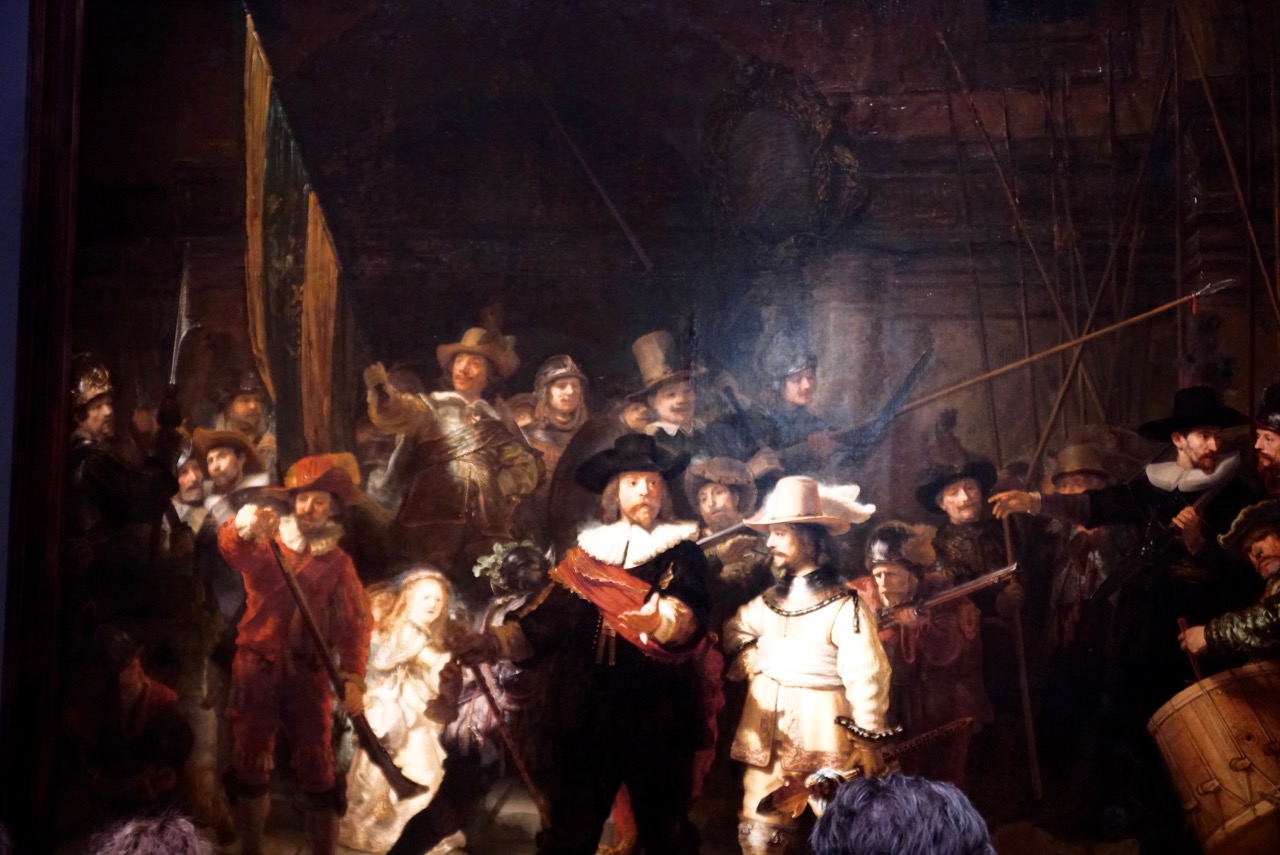 Rembrandt's Night Watch: The name was given much later. Cleaning of the painting revealed that it is actually a scene inside a dark room with daylight streaming in from a unseen window.
Rembrandt's Night Watch: The name was given much later. Cleaning of the painting revealed that it is actually a scene inside a dark room with daylight streaming in from a unseen window.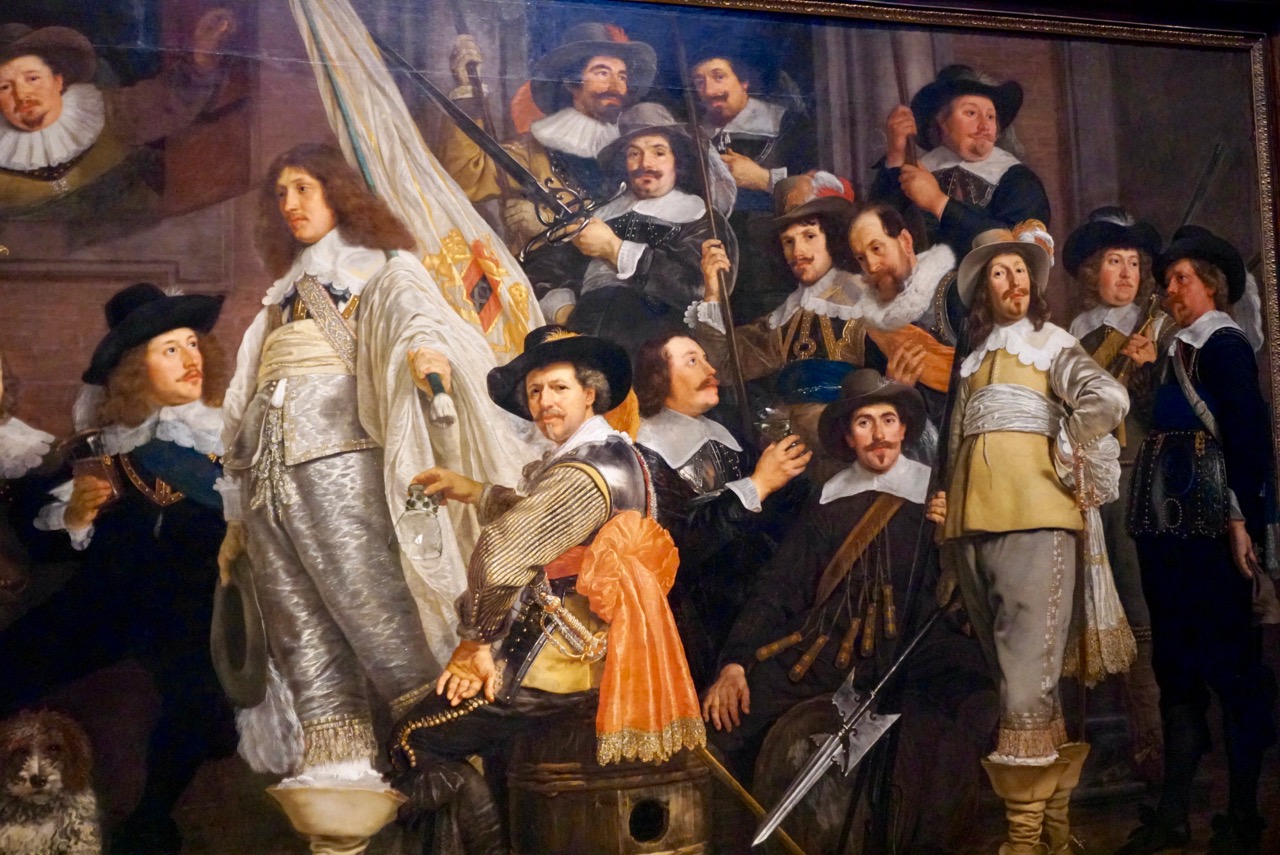 A detail from a painting by Van Der Helst, hanging opposite the Night Watch in the Rijksmuseum
A detail from a painting by Van Der Helst, hanging opposite the Night Watch in the RijksmuseumAmsterdam has for centuries been one of the most open, multi-cultural, free cities in the world. Founded in 1602, for the next two hundred years, the Dutch East Indian Company was the largest commercial company in the world. Ships carrying goods from around the world sailed into Amsterdam’s harbor. Their freight was off-loaded into smaller boats which could navigate Amsterdam’s extensive canal system to distribute the goods. Amsterdam’s Red Light (commercial sex) district is legendary. Women of all races and body types sit scantily clothed around the clock in special display windows.  Since the late Sixties, drugs have been tolerated in Amsterdam, making it the only major city in the West where drugs could be consumed publically in large clubs, such as the Fantasia and Paradiso clubs which I visited in the early 70’s while I was a student in Kiel, Germany. The Dutch government did the logical and practical thing, which was to distinguish legally between “hard” drugs (heroin, cocaine, LSD, etc.) and “soft” drugs (hashish and marijuana). These days the pot scene is concentrated in a specific number of designated coffee shops, where hash and grass are sold for immediate consumption on the premises. It’s supposedly against the law to smoke in public. However, we witnessed a Dutch policeman forcing a tourist to empty the beer can that he had been drinking on the street. The policeman told him it was okay to smoke joints on the street, but he should only drink alcohol in the bars.
Since the late Sixties, drugs have been tolerated in Amsterdam, making it the only major city in the West where drugs could be consumed publically in large clubs, such as the Fantasia and Paradiso clubs which I visited in the early 70’s while I was a student in Kiel, Germany. The Dutch government did the logical and practical thing, which was to distinguish legally between “hard” drugs (heroin, cocaine, LSD, etc.) and “soft” drugs (hashish and marijuana). These days the pot scene is concentrated in a specific number of designated coffee shops, where hash and grass are sold for immediate consumption on the premises. It’s supposedly against the law to smoke in public. However, we witnessed a Dutch policeman forcing a tourist to empty the beer can that he had been drinking on the street. The policeman told him it was okay to smoke joints on the street, but he should only drink alcohol in the bars.
 Gouda Cheese aging in place
Gouda Cheese aging in placeI look forward to the day when US legal authorities will be similarly reasonable. However, one difference between Holland and the US states of Colorado, Oregon, Alaska, California, and Nevada, which have legalized recreational marijuana, is that Holland does not allow the large-scale legal commercial cultivation of marijuana, as has been done in the states. (Cultivation and legal consumption of marijuana is still illegal under federal law.) It’s amazing to realize that due to citizen’s initiatives which led to legalization in those states listed above, besides having a long tradition of legal prostitution, my home state of Nevada is even more progressive on marijuana than the Dutch!
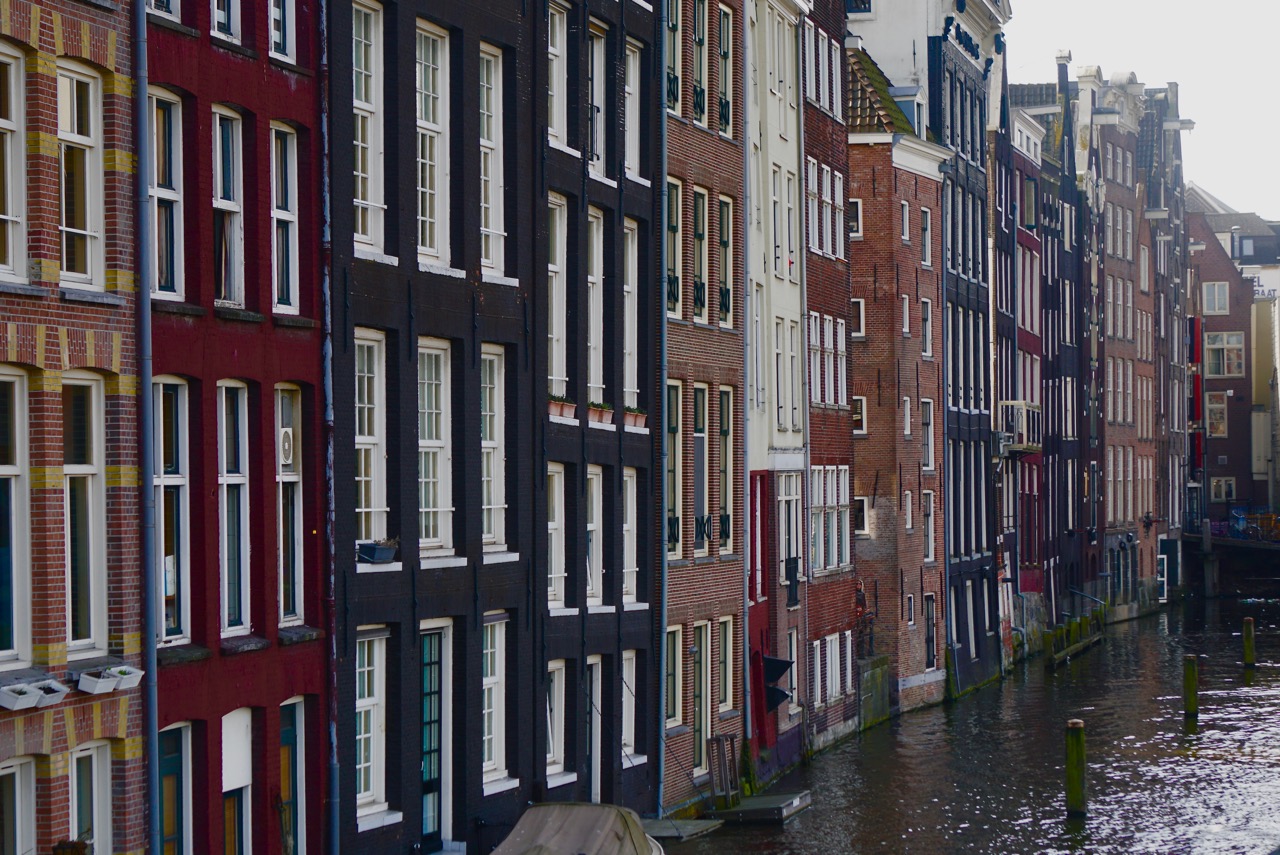 Amsterdam canal waterfront...Buildings from the 16th century
Amsterdam canal waterfront...Buildings from the 16th century A representation of a treaty signing by one of the Dutch Masters (sorry I don't remember exactly who painted this)
A representation of a treaty signing by one of the Dutch Masters (sorry I don't remember exactly who painted this)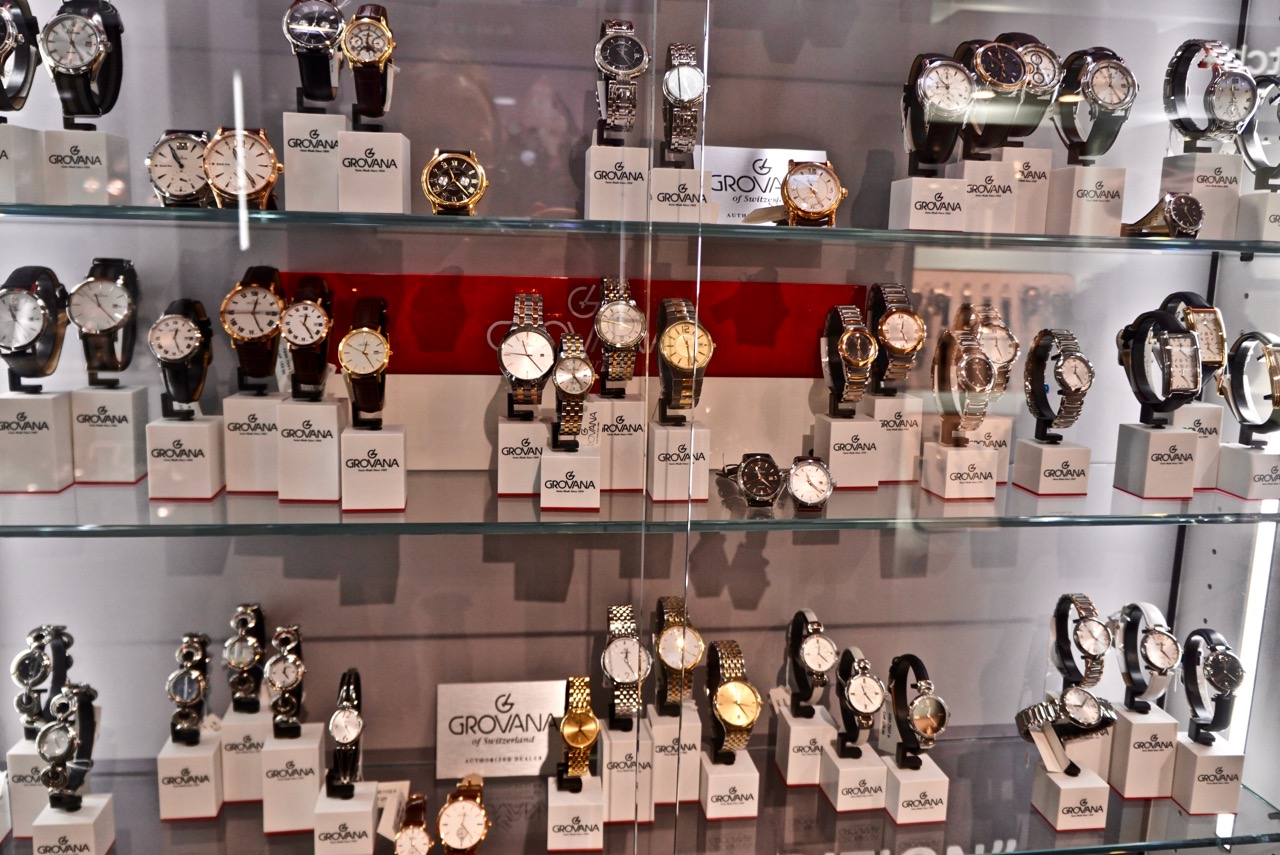
I had visited Switzerland only once before in 1973, driving my VW van with my parents, when they came to Europe to persuade me to come back to the US after I had stayed out of the country for three years. By that time. . .
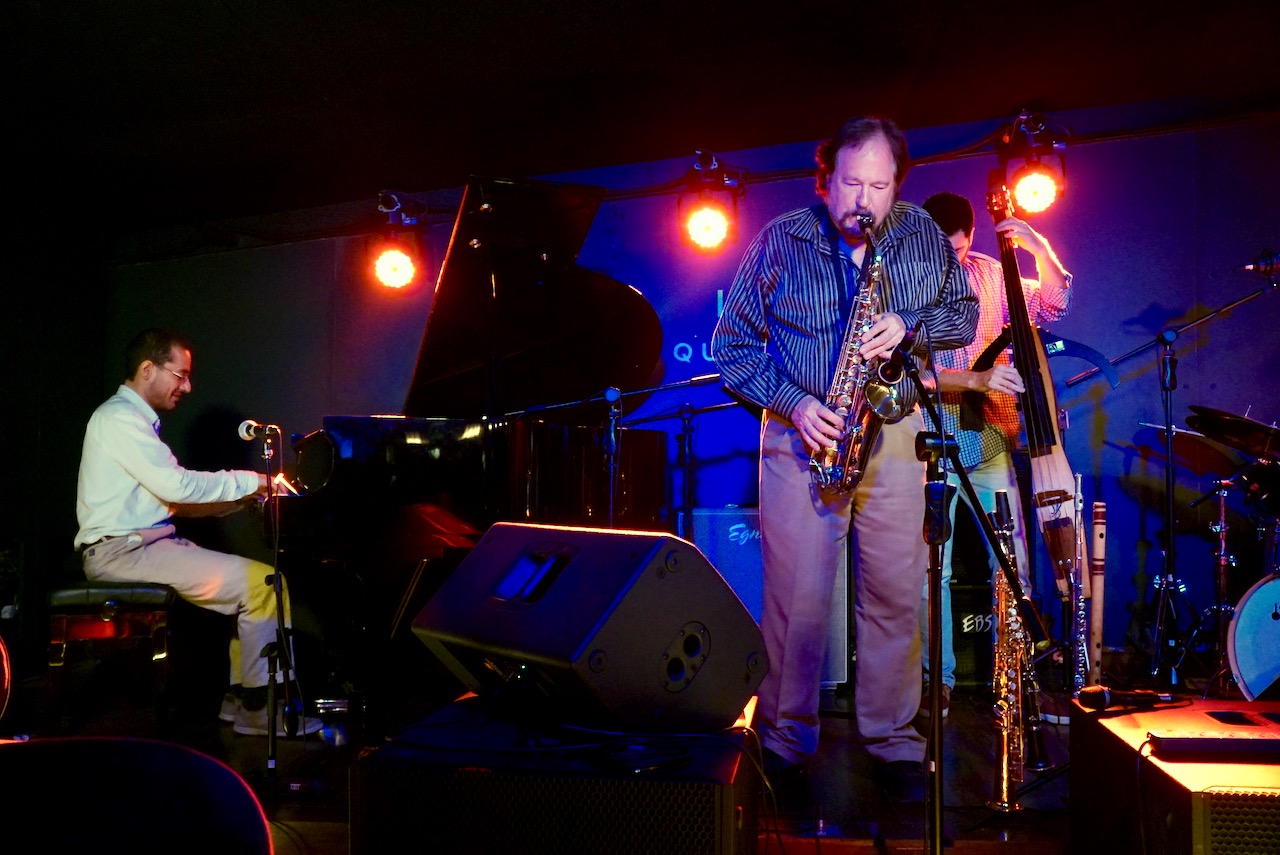
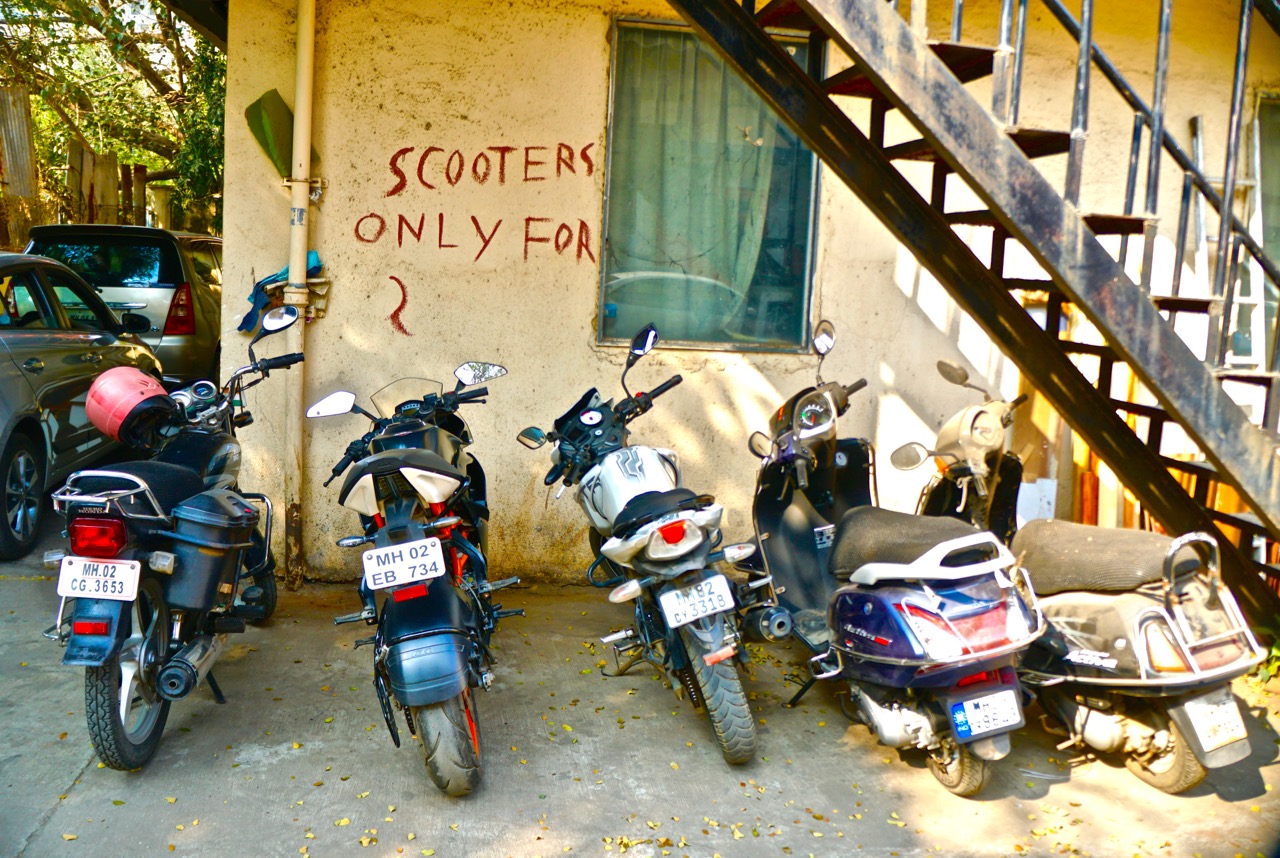
There are positives and negatives about India. While the same statement can be made about any country, in my experience India is extreme in practically every aspect. I’ll start with the negatives.
Indian traffic is challenging. I would never personally choose to drive here. I prefer riding in the back seat whenever possible, just for potential padding in case of an accident. For starters, India still adheres to the British scheme of driving on the left with right hand steering. Lanes are non-existent and ignored for the most part. The overriding rule is: whoever manages to occupy a particular space first has the right of way.

Have you ever pushed a shovel through a large anthill and observed the creatures scurrying in every direction? That’s what Indian traffic is like. Somehow the ants seem to find their way without colliding with each other. Indian traffic mostly manages to do the same. Streets in Mumbai are clogged almost around the clock. Only after midnight does traffic flow smoothly. A trip can take twenty minutes late at night that during the day might take two hours.
One time I experienced true gridlock. I was in a three-wheeler rickshaw (called tuk-tuks in Thailand) in a traffic jam in which there was no free space for anyone to move in any direction. We simply sat still in place on the clogged streets for a long time as they slowly unclogged.

Indian drivers are masters of the simultaneous monitoring of multiple moving objects, i.e. cars, trucks, motorbikes, bicycles, hand-drawn wagons, and pedestrians. Truck drivers and cars rule the roads. It’s up to all smaller moving people and objects to move out of their path. Drivers calculate their own speed in relation to the pedestrians in their way. They aim directly for where you are walking with the knowledge that by the time they reach that spot, you will have moved out of the way. The most dangerous thing one can do is stop still in the path of oncoming traffic.
People ask me, how do you cope with the beggars? My answer is that beggars in the Americas or in Africa are poorer, because they don’t a rich and sympathetic culture to support them. Begging in India even garners respect when rich individuals renounce all their possessions except for a robe and a begging bowl, trusting that the gods and their fellow countrymen will sustain them. Interestingly, I found a reduction by at least fifty percent of street people sleeping along a particular stretch of highway compared with last year. I count them when I drive by in a taxi late at night. When I asked about it, I was told that the government has sought to provide free or low-cost housing for as many of the homeless as possible. However, I was told that some of these street people take possession of the government housing and then turn around rent the housing out to new arrivals from the countryside, with the original renters returning to their familiar place on the street, while profiting off the desperation of new arrivals to this city of twenty million.
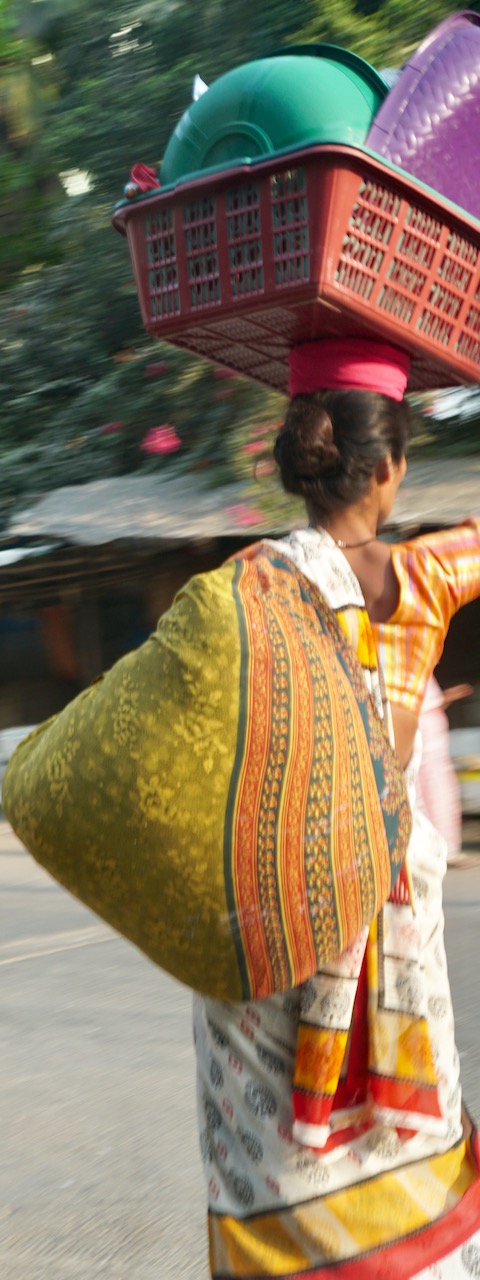
For me, the positives far outweigh the negatives. This why I keep coming back year after year. I’ve been here over a dozen times, starting first in 1971 at age 23. That was the year I also spent time in Afghanistan, which was when the Afghan king was still on the throne, and back-packing hippies like myself were welcomed with some puzzlement but with a genuine hospitality. I had first been exposed to Indian classical music by Ravi Shankar and Alla Rakha’s 1967 Live in Monterey LP. Soon after that I heard Ali Akbar Khan on LP. This was a magical sophisticated meditative style of music that immediately captured my attention, particularly on the bamboo flute.
I stayed out of the states for three and a half years until late 1972, until the Vietnam War was over. Upon my return, I worked and saved money to travel to Mexico and Guatemala, and ultimately visited California for the first time. When I learned that Ali Akbar Khan had opened his music school in Marin County, I went back to Georgia to work and save enough money to ultimately move to California. I’ve been a West Coaster ever since. The rest, as they say, is history.

A few words about the food: every meal (hopefully) is an adventure. Just like a tourist can have the best French meal of one’s life in a small Paris bistro, the most humble Indian vegetarian restaurant can outdo anything available in the states. Indian meals are very inexpensive if not taken in a tourist-oriented restaurant. The spices are fresher and sprinkled more liberally. India is a vegan paradise, since a large part of the Hindu and Jain populations are strict vegetarians, if not vegans. (But I remain an omnivore.) At the same time, an international cuisine culture is growing in Mumbai, from pizza to falafel to sushi and beyond.


I call this my “musical vacation.” With help from my friends, I’ve played music with my friends somewhere almost every day. Concerts include the National Association for the Performing Arts with Susan, playing twice in a new upscale jazz venue within the Royal Opera House complex called The Quarter, and several nights at the Bandra Base, a small performance venue managed by my American expat friend Dee Wood, who’s lived in India for over thirty years. I’ve played with visiting musicians from Japan, Italy, Hungary, and France. There’s quite a growing music scene here, led for the last five years by the True School of Music, a school teaching jazz, pop, improvisation, engineering, production, and music business in general. The TSM employs guest foreign jazz musicians who instruct the local musicians in our most wonderful American cultural export: Jazz.
During the early 80’s when I worked in the Bollywood film industry playing my Lyricon wind synth, I had the honor of recording on a song with the woman who holds the Guinness Book of World Records for the most combined recordings of anyone in the world, Lata Mangeshkar. This week, I had the honor or performing on the album of her nephew Baiju Mangeshkar. I had met him a year ago, and in the meantime Susan and I recorded some tracks in our Reno studio to be on the album. Baiju invited me into the studio to video me “flute-synching” for a promotional video. And while I was there, I recorded alternate flute tracks to the ones I had previously sent from Reno. His music is basically original Indian pop music, which will be released only online. Not enough people (anywhere) are buying enough CD’s to warrant the large manufactured lots of previous years.


Ultimately, it’s the people that make a place livable. Except for the haughty rich with their noses in the air, practically anybody of any religion or economic class will return my smiles very readily. This is not the cold traditional formality of Northern Europe. This is the warm openness of a huge population forced to live close together in a society that somehow helps even the poorest lame beggars to survive.
Finally, I want to relate that this year and for several years previously, I’ve had the privilege of staying in Lajo Gupta’s luxurious Mumbai apartment. Lajo is the daughter of maestro Ali Akbar Khan. We met in the late 70’s, were out of touch for two decades, and then re-connected through Facebook. Lajo lives most of the year (for the last 30 years) with her husband and daughters in Dubai. She comes to her apartment in Mumbai a few times per year, thankfully at the time of my annual visits, which are at the height of the winter concert season.
I hope to continue these annual Indian musical vacation-pilgrimages as long as I possibly can.
Here are some photos of "My Musical Vacation" in Mumbai:


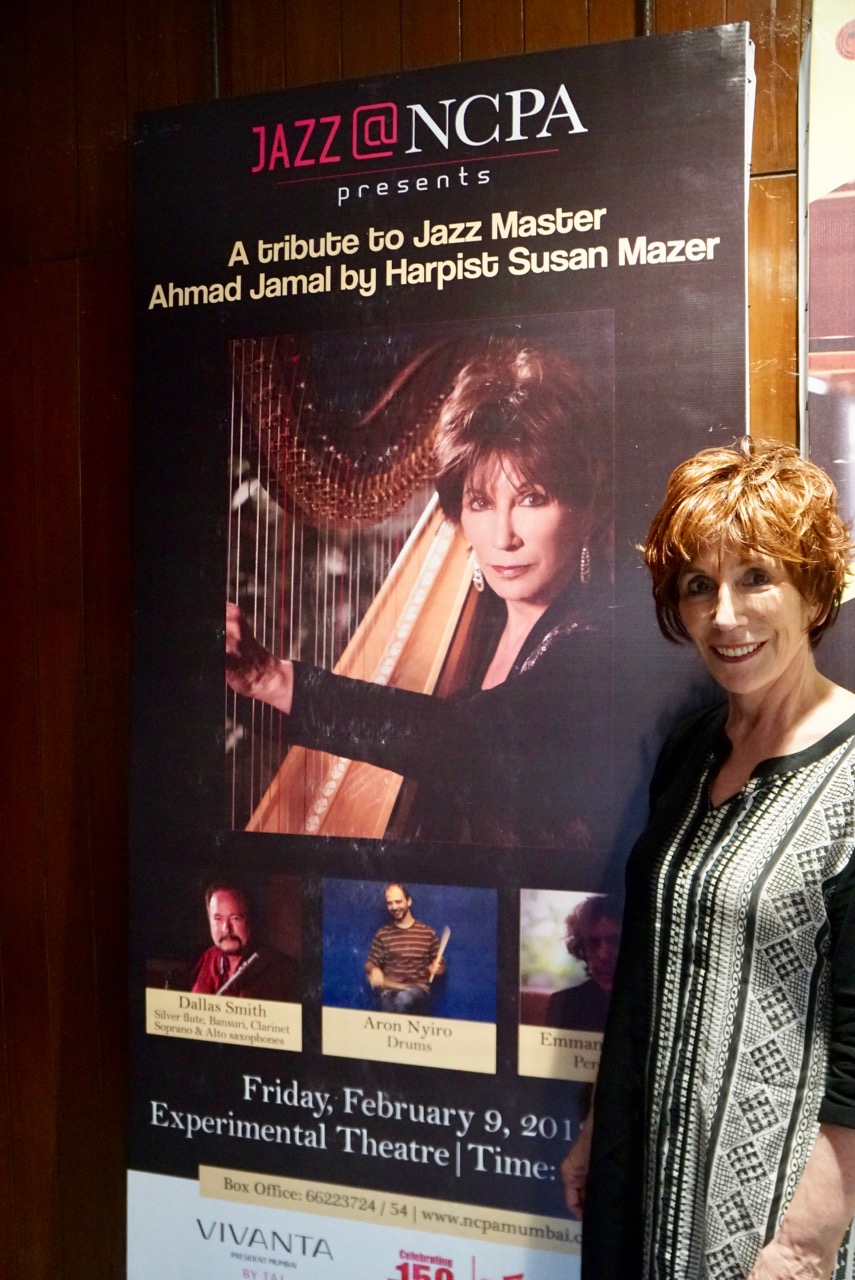
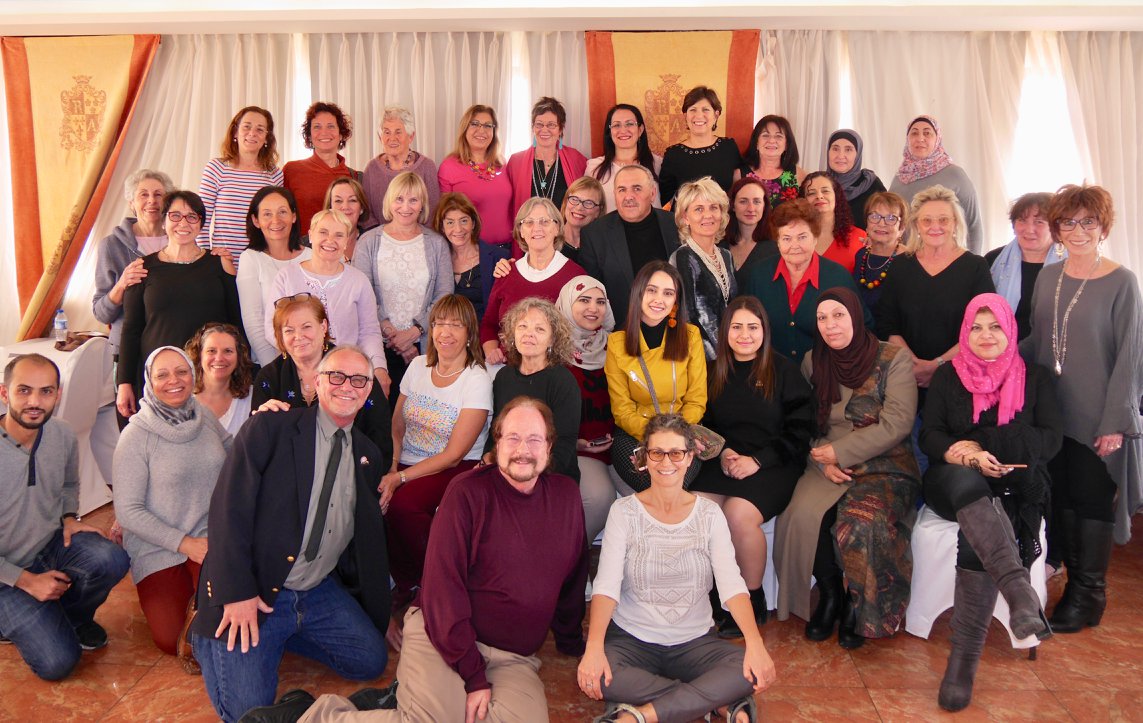
2018 marks the sixth conference in Jordan of the Middle East Nurses United in Human Caring. The conference was started by nursing pioneer Dr. Jean Watson, together with nurses from Israel and Palestine. Jean, who holds now 12 honorary international doctorates based on her Caritas. . .
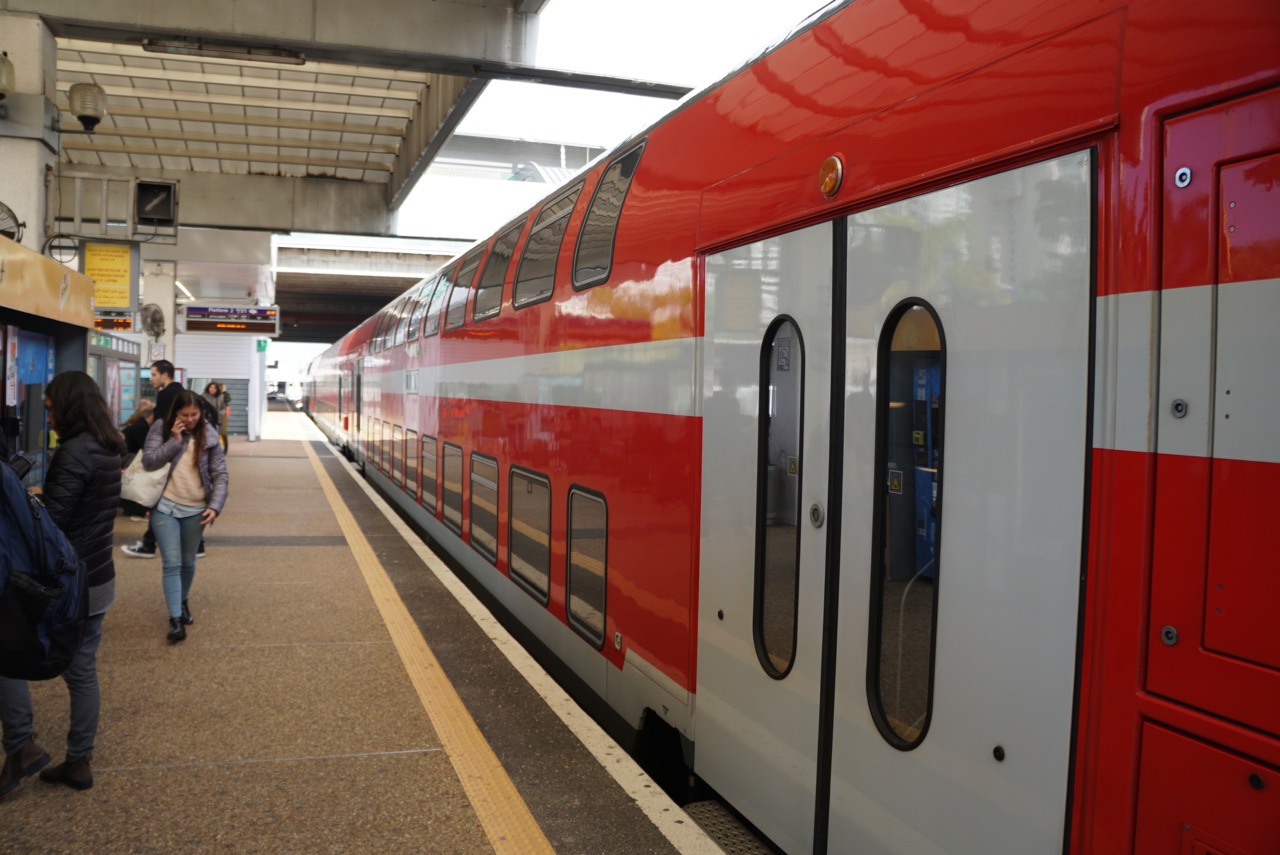
Traveling on the segment from New York’s JFK airport to Israel, I was coincidentally seated next to a guy from Reno. He was an engineer named Paul, traveling to Israel for his company. From previous familiarity, I correctly guessed the company, Ormat Technologies. . .
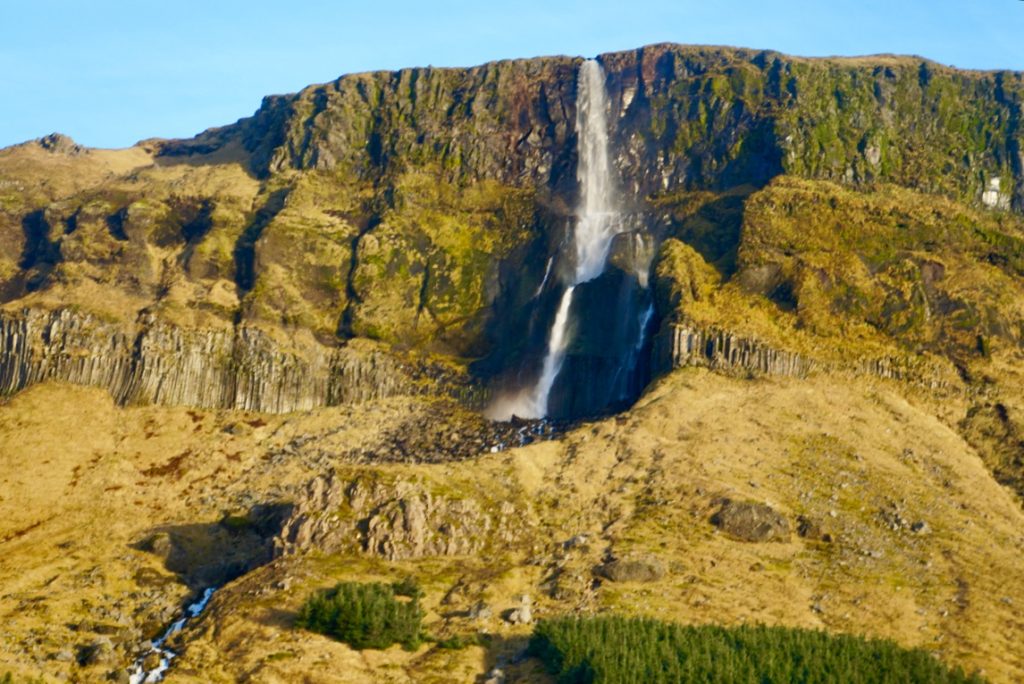
Whenever I travel to “old Europe,” that is, the continent of Europe, I’m reminded that Europeans are much more aware of history than Americans are. They see the old cathedrals, the castles, the city walls, the statues, the artwork…all products of their long history. . .